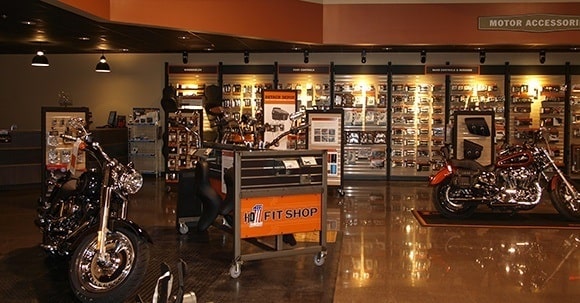Explore the Latest Motocross Gear NZ for Every Level of Rider
Explore the Latest Motocross Gear NZ for Every Level of Rider
Blog Article
A Thorough Look at Bike Components: What Every Rider Needs To Know
A comprehensive understanding of motorcycle parts is not simply valuable but critical for any biker aiming to make best use of performance and security. Each element, from the engine's complex functions to the dependability of brake systems, plays a crucial role in the general experience and functionality of the bike.
Recognizing the Engine
The engine, frequently regarded as the heart of a motorbike, is an intricate assembly of components that operate in harmony to transform gas into motion. At its core, the engine's key feature involves the combustion process, where air and fuel mix and stir up within the cylinders, leading to controlled explosions that drive the pistons. These pistons go up and down, transforming chemical power right into mechanical power, which subsequently turns the crankshaft, eventually powering the bike.

Understanding the ins and outs of a bike engine is critical for enthusiasts and motorcyclists alike. It not just offers understanding into just how motorcycles achieve their remarkable power and rate but likewise aids in reliable maintenance and troubleshooting, ensuring long life and reliability when traveling.
Suspension Equipments
While the engine powers the bike, the shock absorber plays a vital role in guaranteeing a controlled and smooth ride. The shock absorber is liable for taking in shocks from the roadway surface, preserving tire contact, and providing security during cornering and stopping. It comprises 2 main elements: the front forks and the back shock absorbers.
Front forks are typically telescopic, wetting and containing a spring device. The spring prolongs and presses to soak up bumps, while the moistening mechanism manages the activity to prevent extreme jumping. This combination makes certain the front wheel remains in call with the roadway, supplying remarkable handling and convenience.
The rear suspension, normally a monoshock or twin-shock arrangement, works in a similar way to the front suspension however is customized to sustain the bike's weight and cyclist - mx gear nz. It handles back wheel activity, adding to the bike's total equilibrium and responsiveness
Suspension systems can be flexible, allowing bikers to adjust preload, compression, and rebound settings according to personal preferences and riding conditions. This adjustability enhances efficiency by enhancing the bike's communication with varied terrains. In summary, an effective shock absorber is vital for motorcyclist convenience, security, and the motorcycle's managing expertise.
Brake Components
Stopping power is a basic element of motorcycle safety, and it depends upon the effectiveness of the brake elements. The primary components of a motorcycle's stopping system consist of the brake pads, calipers, rotors, and master cylinder. motox parts nz. Each of these components plays an essential duty in making certain efficient braking performance
Brake pads are essential as they develop the needed friction versus the rotors to decrease or quit the motorbike. Constructed from products such as sintered steel or natural use this link composites, the selection of brake pad product considerably impacts performance and long life. Calipers, housing the brake pads, use pressure to the pads when the brake bar is engaged, promoting call with the blades.
The blades, typically made from stainless steel or actors iron, are mounted to the wheels and act as the surface against which the brake pads press. Their style, including diameter and density, influences warmth dissipation and stopping power. The master cylinder, attached to the brake bar, produces hydraulic stress transferred with brake lines to the calipers, ensuring regular braking pressure.
Normal maintenance and inspection of these elements are vital for ideal efficiency, preventing wear and ensuring cyclist safety and security on the road.
Tire Essentials
Beyond preserving durable stopping systems, making certain ideal tire performance is just as substantial for bike safety and effectiveness. Tires are the sole contact factor in between the road and the motorcycle, making their condition critical in managing, stability, and total trip high quality. Choosing the proper tire type is important, as it straight affects grip and efficiency. Alternatives range from exploring to sport tires, each designed to suit certain riding designs and conditions.

Examine the sidewall for the DOT (Division of Transport) code to identify the tire's age. Investing attention in these tire fundamentals not only enhances efficiency yet additionally significantly enhances riding safety.
Electric Systems
In the realm of motorcycle maintenance, the electrical system plays a critical function in ensuring reputable efficiency and cyclist safety and security. This detailed network encompasses important components such as the battery, alternator, starter find electric motor, and circuitry harness. Each aspect is essential for the seamless procedure of the motorbike, advice from ignition to lights and interaction with different sensors.
The battery acts as the heart of the electrical system, providing the needed power to start the engine and run devices. Routinely checking the battery's voltage and terminals for corrosion is crucial to stop unanticipated failings. The generator, on the various other hand, charges the battery while the engine is running, guaranteeing a continuous power supply.
To keep it, bikers must pay attention to any type of uncommon sounds or troubles during start-up. Ensuring that the cables are free and intact from damages is important for making certain and protecting against brief circuits performance.
Final Thought

Stopping power is an essential aspect of bike security, and it hinges on the performance of the brake elements. The primary components of a motorbike's braking system consist of the brake pads, calipers, rotors, and master cyndrical tube.Brake pads are essential as they produce the needed friction versus the rotors to reduce down or stop the motorcycle.Beyond keeping robust stopping systems, guaranteeing optimum tire efficiency is just as considerable for motorcycle security and efficiency.In the world of bike upkeep, the electrical system plays a crucial function in ensuring trustworthy efficiency and motorcyclist safety.
Report this page